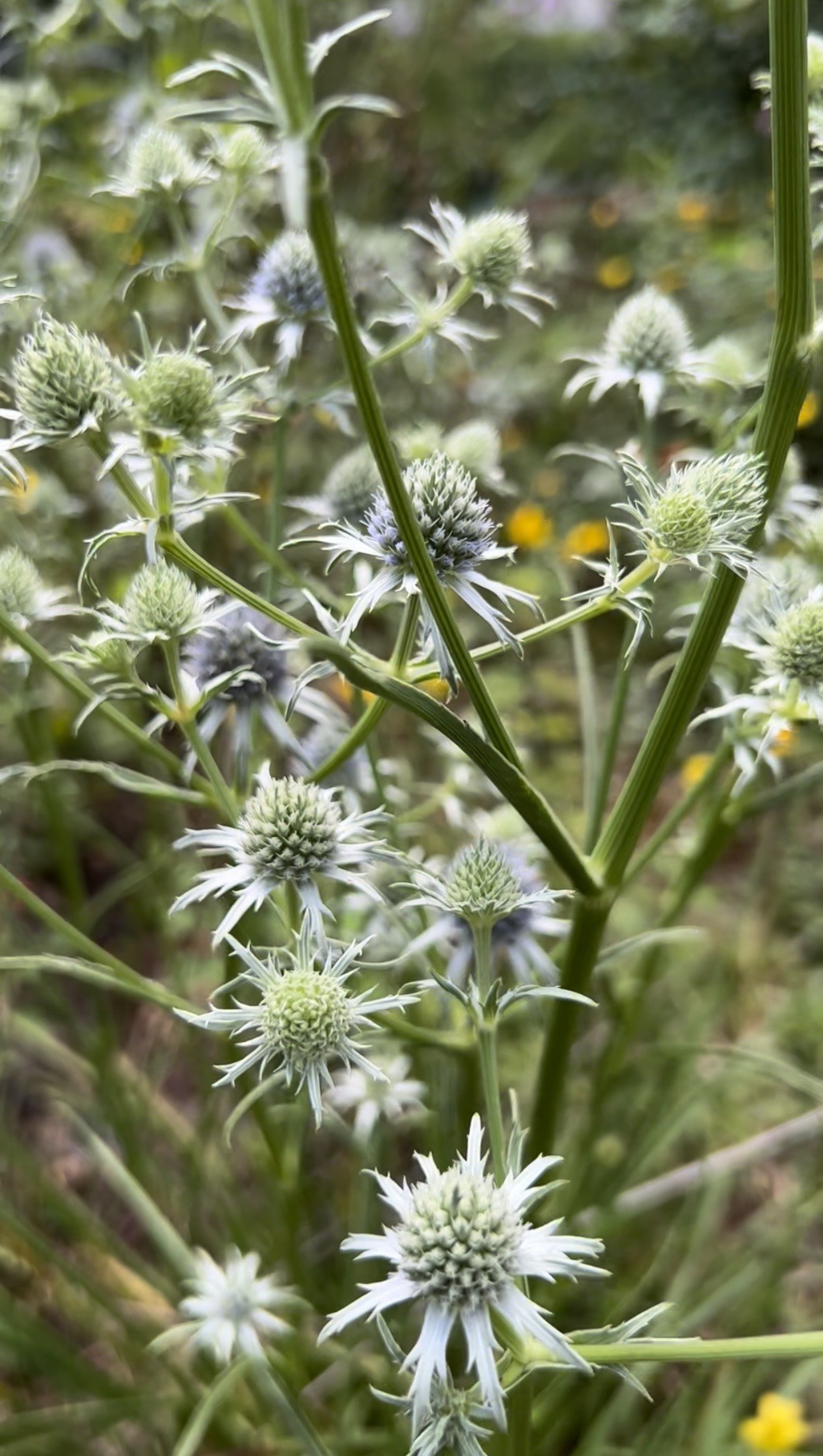Eryngium yuccifolium (rattlesnake master)
Native Americans of the Southeast stocked a heavy arsenal as they prepared for battle. An important part of this weaponry included medicine. The outcome of the wars, many believed, depended on the potency of their war medicine. Soldiers carried medicine bundles, leaders consumed war medicine before feasting, and priests applied war medicine to wounds.
A coveted component of their medicine cabinet of war included the native plant rattlesnake master, also known as button snakeroot or button eryngo. Used to induce vomiting and cure snake bites by Indigenous Americans for thousands of years, rattlesnake master continues its usefulness in the backyard garden as a pollen-laden plant for native insects and a breathtaking cut flower for the dining table. In the fight against the extinction of insects, this plant may just be what the doctor ordered.
Two popular species of native rattlesnake master, Eryngium yuccifolium (rattlesnake master) and Eryngium aquaticum (blue rattlesnake master), naturally occur in the eastern United States, happily absorbing direct sunlight in open bogs, marshes, and ditches that stay saturated or experience occasional flooding. Rattlesnake master tolerates consistent drought, while blue rattlesnake master tolerates some drought once established but performs best in wet soils and full sun.
Eryngium aquaticum (blue rattlesnake master)
Rattlesnake master’s chalk-white and blue rattlesnake master’s pastel-blue globular spiked blooms emit an opalescence in the sun, providing a truly unique textural experience. A grassy mound for most of the year, these plants’ flower stalks grow between three and four feet in height and width through the summer. Blooms appear in the late summer through early fall and allow this plant to reseed readily. Expect a blanket of insects to cover this plant when it blooms – pollinators find rattlesnake master simply irresistible! A blooming beauty and a larval foodie, eastern black swallowtails sometimes feed on rattlesnake masters as they belong to the parsnip/carrot family.
Though edible to eastern black swallowtails, rattlesnake master causes humans to vomit. This quality of rattlesnake master deeply impacted the trajectory of another native plant, the yaupon holly tree. Indigenous nations across the Southeast drank the now infamous yaupon holly-based tea, called black drink, daily, as well as ritually. As a part of ceremonies, leaders consumed black drink with the intent to purify themselves and the beverage caused them to vomit. Observations of this process led taxonomists to consider the main ingredient of yaupon holly an emetic (induces vomiting), so they classified the plant Ilex vomitoria. However, Indigenous people drank the caffeinated yaupon holly tea daily the same way my office mates regularly down a cup of coffee or green tea with no ill effects. Historians believe Indigenous people infused black drink with rattlesnake master for rituals that required physical and spiritual cleansing, leading to yaupon holly’s taxonomic misnomer.
Still highly regarded by Indigenous communities, the horticulture industry recently discovered rattlesnake master’s utility as a pollinator plant for the garden and as a cut flower for arrangements. No longer used for war in the traditional sense, rattlesnake master aids in the fight against climate change as the native plant movement gains ground across America. Look for the blooms in floral arrangements at your nearest grocery store! You can, of course, find the rattlesnake master plant at Native Nurseries in stock most of the year.


